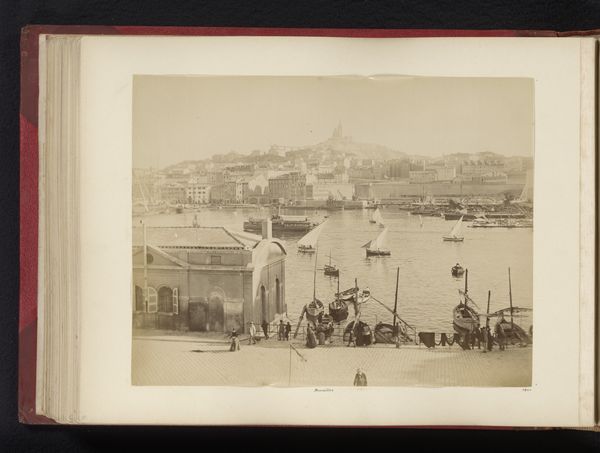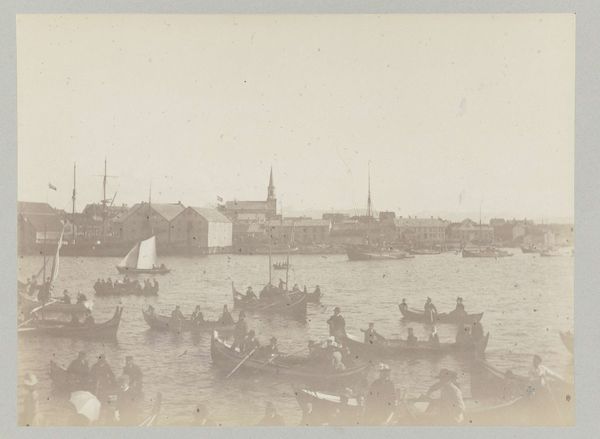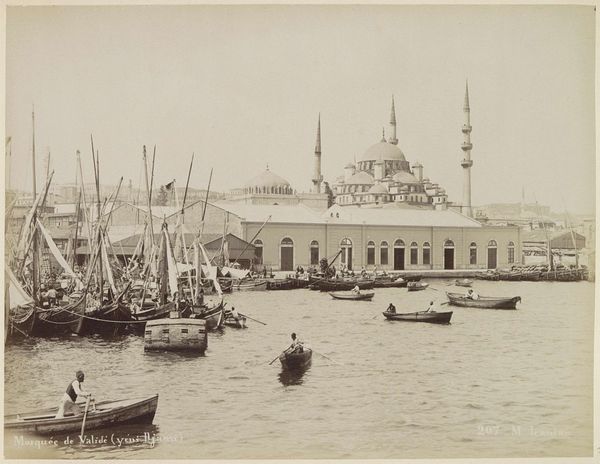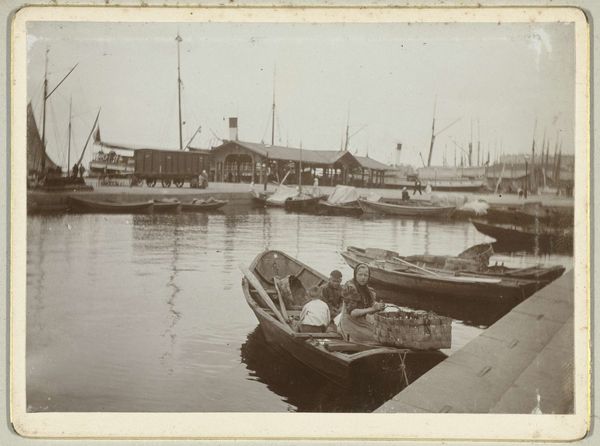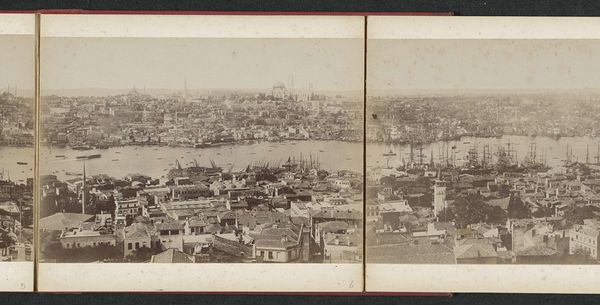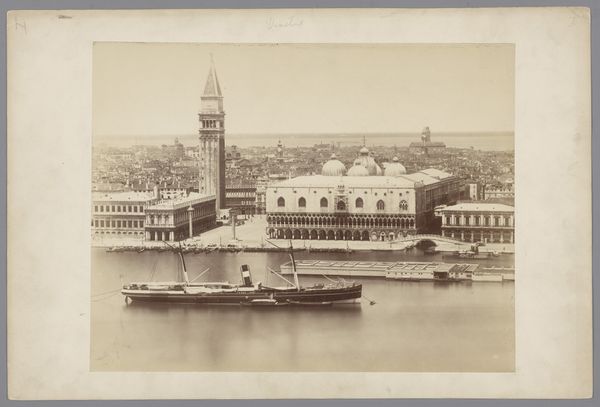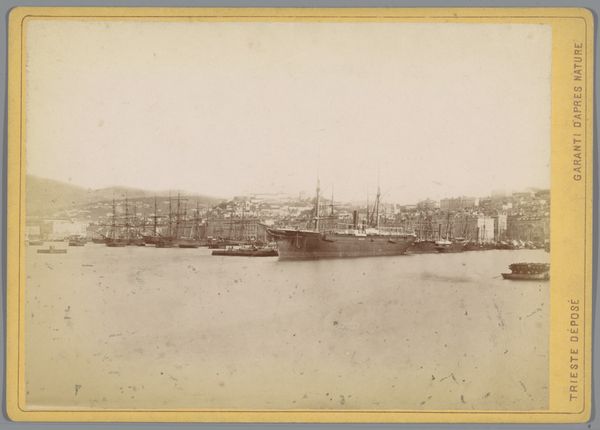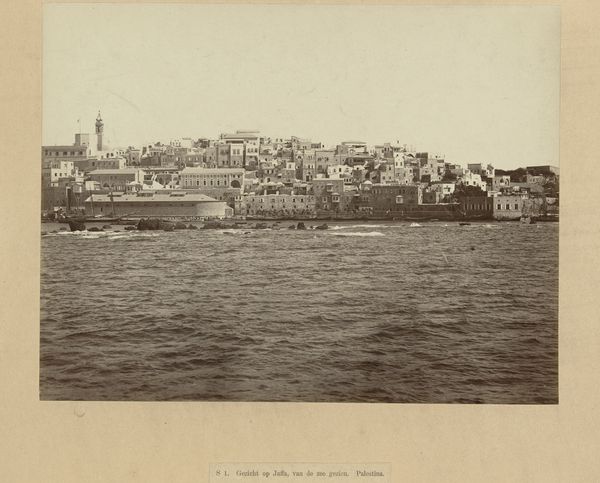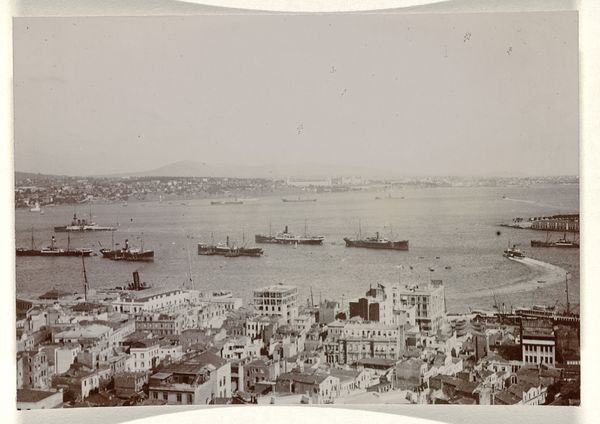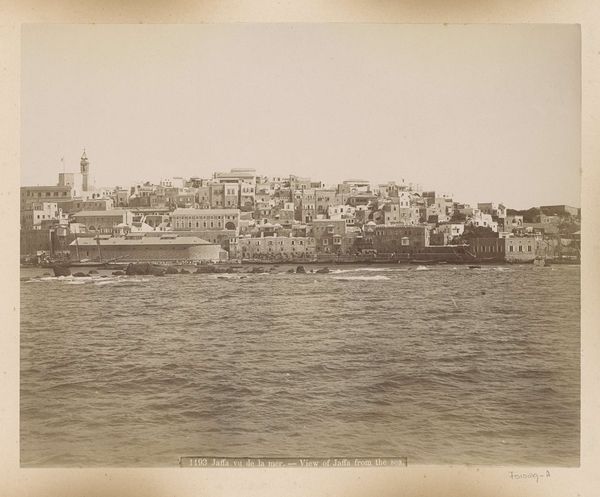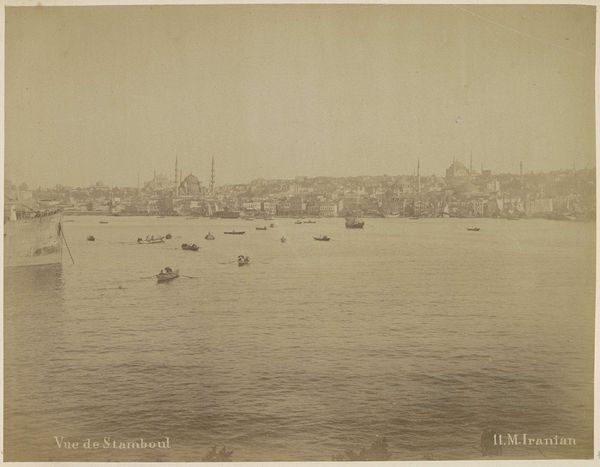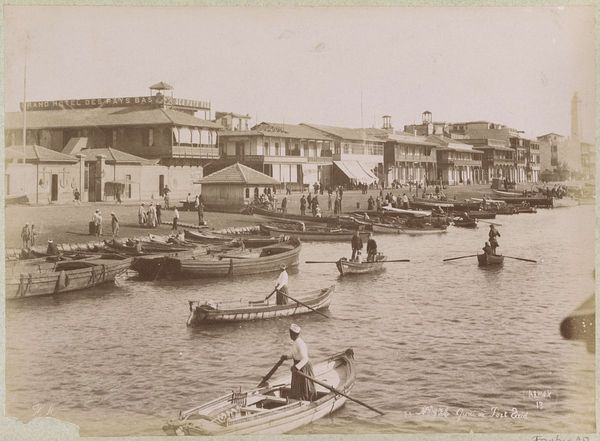
print, photography, gelatin-silver-print, albumen-print
# print
#
landscape
#
photography
#
orientalism
#
gelatin-silver-print
#
cityscape
#
islamic-art
#
albumen-print
Dimensions: height 208 mm, width 269 mm
Copyright: Rijks Museum: Open Domain
Editor: This is "Gezicht op de Sultan Ahmetmoskee in Istanboel," a photograph dating from around 1888 to 1900 by Sébah & Joaillier. It appears to be an albumen print. It’s so interesting to see such a definitive landmark of Istanbul rendered in this aged, almost sepia tone. What are your initial thoughts on this particular rendering of the Blue Mosque? Curator: What strikes me is how this photograph speaks to the intersection of artistic vision, material processes, and the socio-economic context of its creation. It's an albumen print, a specific photographic process involving coating paper with egg whites, making it highly light-sensitive. This wasn't just an artistic choice; it reflected available technologies and labor practices. Consider the hands involved: from those preparing the chemicals, the photographer manipulating the camera and the developing of the print. Editor: That's a really different way of thinking about it. It never occurred to me to think about who would have even prepared all the supplies to make such photos, let alone the labor that was required. Does that change how you perceive the subject matter? Curator: Absolutely. It places this romantic "Orientalist" view within a tangible framework of production. We must consider Sébah & Joaillier's business; they catered to a Western audience eager to consume images of the 'exotic' East. How does that influence the composition, the inclusion of the working boats, and even the perspective? Were they trying to reflect something truthful about the everyday material conditions or provide viewers with the type of content they were more inclined to buy? Editor: So, understanding the medium itself – the albumen print, and the process of photographic production – helps us deconstruct the photograph's intended message and its role in a broader, perhaps even colonial, consumption of culture. Curator: Precisely. By focusing on materiality and production, we gain a more nuanced understanding, recognizing photography not as a mere record but as a complex product of its time, interwoven with economic and social structures. Editor: That gives me so much more to think about than just the visual representation.
Comments
No comments
Be the first to comment and join the conversation on the ultimate creative platform.

